Uplistsikhe Devastated By Genghis-Khan Hordes But Once City-Fortress Of Queen Tamar
A. Sutherland - AncientPages.com - Uplistsikhe (today in ruins) is a cave-town fortress, one of the oldest religious, political and cultural centers of present-day Georgia located at the crossroads of Western Asia and Eastern Europe. In ancient times, Uplistsikhe was a pagan holy place.
Caves at Uplistsikhe. Image credit: BBCLCD - CC BY-SA 4.0
The city was also one of the oldest urban settlements in the Caucasus. It arose at the dawn of the Iron Age, at the beginning of the first millennium BC and stood directly on the path of the old Silk Road.
Over three thousand years of its history it has experienced several ups and downs. In 13th century, it was destroyed by the invading Mongols led by Hulagu, Genghis Khan grandson, in the XIII century. Then it was left and abandoned.
The long history of the cave-town fortress, Uplistsikhe, is still recognizable in the remains of unique architectural buildings of different ages, religions and civilizations, all buried in several layers beneath the ground.
Uplistsikhe, of which name means - ‘fortress of the ruler (or ‘fortress of the lord’), is a huge cave city, about 10 kilometers from the town of Gori and carved into volcanic rocks on the shore of the river Mtkvari.
It arose at the dawn of the Iron Age, at the beginning of the first millennium BC.
The city is divided into three parts: south (lower), middle (central), and north (upper) covering an area of approximately 8 hectares. The largest, central part of Uplistsikhe is connected to the southern part via a narrow rock-cut pass and a tunnel. The city had a central “street” connected with a number of narrow alleys and staircases leading to many different structures.
Uplistsikhe Caves. Image credit: Dudva - CC BY-SA 4.0
In the past, the city was surrounded by a protective moat surrounding it from the east and the north. Uplistsikhe had four gates from all parts of the world. Today, this ancient place still has the two-column “reception hall of Queen Tamara” decorated with huge pylons and arch niches attesting to the high skills of the builders. Wine storages, fragments of temples and fortifications, and the secret underground tunnel used for water supply are still intact.
Niches and stairs carved in the cliffs along the river, centuries ago, lead into the fascinating ruins of living quarters, storage, temples, especially the Palace of Queen Tamar, the most extraordinary ruler in the Georgian Golden Age. Tamar was named “King of Kings and Queen of Queens”.
"Queen Tamara (1169-1212), who reigned from 1184 to 1212 ruled over the largest territory ever to come under the control of Georgia; during her reign, the kingdom stretched from Azerbaijan, north of present-day Iran, to the borders of Cherkessia, in the North Caucasus.
Queen Tamar was enthroned as ruler of Georgia at the age of eighteen. She was called “King” because her father had no male heir and so she ruled as a monarch and not as a consort." 1
The majority of the caves are lacking decorations. The central ensemble, a big hall with a coffered tunnel-vaulted ceiling, and the palace complex is the most interesting architecturally. The ribbed ceiling with an aperture, a smoke outlet that also admitted light, was supported by two columns carved from the living rock; the hall had niches-loggias on three sides.
Archaeological excavations revealed numerous antiquities a pharmacy, a wine cellar, and a secret tunnel to the river. There are still many inaccessible and yet unexplored caves in the area of this monumental city.
The ancient city of Uplistsikhe, without exaggeration, was one of the most important monuments of Georgian culture.
Queen Tamar is also associated with the Vardzia monastery which consists of "over six thousand apartments in a thirteen-story complex. The city included a church, a throne room, and a complex irrigation system watering terraced farmlands. A complex irrigation system watering terraced farmlands was also constructed and in some tunnels, the old irrigation pipes still bring drinkable water." 1
Written by – A. Sutherland - AncientPages.com Senior Staff Writer
Copyright © AncientPages.com All rights reserved. This material may not be published, broadcast, rewritten or redistributed in whole or part without the express written permission of AncientPages.com
Expand for referencesReferences:
More From Ancient Pages
-
 Bulgarian Archaeologists Find Nearly 3000 Coins In Clay Pot At Sofia Dig
News | Sep 8, 2015
Bulgarian Archaeologists Find Nearly 3000 Coins In Clay Pot At Sofia Dig
News | Sep 8, 2015 -
 A 2,500-Year-Old Marble Disc, Designed To Protect Ancient Ships And Ward Off The Evil Eye – Discovered
Archaeology | Aug 4, 2023
A 2,500-Year-Old Marble Disc, Designed To Protect Ancient Ships And Ward Off The Evil Eye – Discovered
Archaeology | Aug 4, 2023 -
 Unusual Double Temple Of Kom Ombo Dedicated To Crocodile God Sobek And Falcon-Headed God Horus
Featured Stories | Mar 14, 2016
Unusual Double Temple Of Kom Ombo Dedicated To Crocodile God Sobek And Falcon-Headed God Horus
Featured Stories | Mar 14, 2016 -
 ‘Flower Burial’ And Shanidar Cave With Neanderthal Remains Who Lived 70,000 Years Ago
Archaeology | Feb 19, 2020
‘Flower Burial’ And Shanidar Cave With Neanderthal Remains Who Lived 70,000 Years Ago
Archaeology | Feb 19, 2020 -
 Ancus Marcius: Semi-Legendary Fourth King Of Rome Obliged To Make War To Defend And Expend Territories
Featured Stories | Jul 12, 2019
Ancus Marcius: Semi-Legendary Fourth King Of Rome Obliged To Make War To Defend And Expend Territories
Featured Stories | Jul 12, 2019 -
 On This Day In History: First Siege Of Rome Began – On March 2, 537
News | Mar 2, 2017
On This Day In History: First Siege Of Rome Began – On March 2, 537
News | Mar 2, 2017 -
 Major Discovery Of 15,000-Year-Old Artifacts Could Re-Write History Of Peru
Archaeology | May 26, 2017
Major Discovery Of 15,000-Year-Old Artifacts Could Re-Write History Of Peru
Archaeology | May 26, 2017 -
 Untouched 1,300-Year-Old Grave Of Merovingian Warrior With Complete Armor Found In Ingelheim, Germany
Archaeology | Sep 19, 2023
Untouched 1,300-Year-Old Grave Of Merovingian Warrior With Complete Armor Found In Ingelheim, Germany
Archaeology | Sep 19, 2023 -
 What The Egg Crisis Reveals About Our Food System
Archaeology | Apr 24, 2023
What The Egg Crisis Reveals About Our Food System
Archaeology | Apr 24, 2023 -
 On This Day In History: Zhao Kuangyin Became Emperor Taizu Of Powerful Song Dynasty – On Feb 4, 960
News | Feb 4, 2017
On This Day In History: Zhao Kuangyin Became Emperor Taizu Of Powerful Song Dynasty – On Feb 4, 960
News | Feb 4, 2017 -
 On This Day In History: Ferdinand Magellan Discovers Guam – On Mar 6, 1521
News | Mar 6, 2017
On This Day In History: Ferdinand Magellan Discovers Guam – On Mar 6, 1521
News | Mar 6, 2017 -
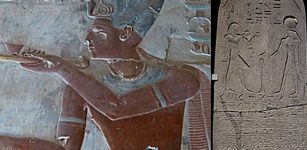 Egyptian King Seti I Documented His 3300-Year-Old Accomplishment On Triumphal Stele
Archaeology | Feb 27, 2023
Egyptian King Seti I Documented His 3300-Year-Old Accomplishment On Triumphal Stele
Archaeology | Feb 27, 2023 -
 Mysterious Denisovans – New Study Offers New Evidence
Fossils | Mar 25, 2021
Mysterious Denisovans – New Study Offers New Evidence
Fossils | Mar 25, 2021 -
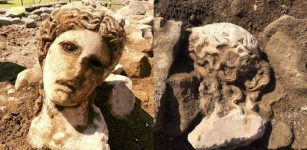 Magnificent 2,000-Year-Old Marble Head Of God Dionysus Discovered In Rome
Archaeology | Jun 17, 2019
Magnificent 2,000-Year-Old Marble Head Of God Dionysus Discovered In Rome
Archaeology | Jun 17, 2019 -
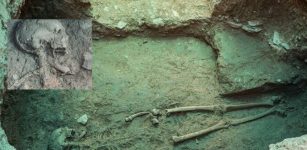 Human Skeleton Dated To Parthian Era Unearthed At Tepe Ashraf In Iran’s City Of Isfahan
Archaeology | Jul 25, 2020
Human Skeleton Dated To Parthian Era Unearthed At Tepe Ashraf In Iran’s City Of Isfahan
Archaeology | Jul 25, 2020 -
 Danger Lurking In The Woods – Unknown Force And Mysterious Lights – Part 1
Featured Stories | Jul 6, 2018
Danger Lurking In The Woods – Unknown Force And Mysterious Lights – Part 1
Featured Stories | Jul 6, 2018 -
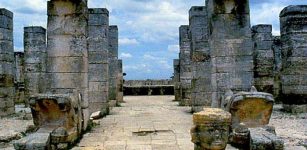 ‘Chac Mool’ – Intriguing Life-Size Figure Carved In Single Stone
Featured Stories | Mar 5, 2016
‘Chac Mool’ – Intriguing Life-Size Figure Carved In Single Stone
Featured Stories | Mar 5, 2016 -
 Ancient Bronze Ring Bearing The Image Of St. Nicholas May Have Been Worn For Protection
Archaeology | Dec 28, 2021
Ancient Bronze Ring Bearing The Image Of St. Nicholas May Have Been Worn For Protection
Archaeology | Dec 28, 2021 -
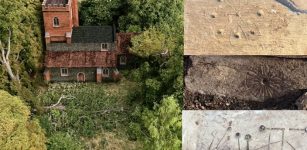 Unusual Stone Carvings And Medieval ‘Witching’ Marks To Ward Off Evil Spirits Discovered In England
Archaeology | Oct 29, 2020
Unusual Stone Carvings And Medieval ‘Witching’ Marks To Ward Off Evil Spirits Discovered In England
Archaeology | Oct 29, 2020 -
 U.S. Bible Museum Says Five Dead Sea Scrolls Fragments In Their Collection Are Fake
Archaeology | Oct 25, 2018
U.S. Bible Museum Says Five Dead Sea Scrolls Fragments In Their Collection Are Fake
Archaeology | Oct 25, 2018



